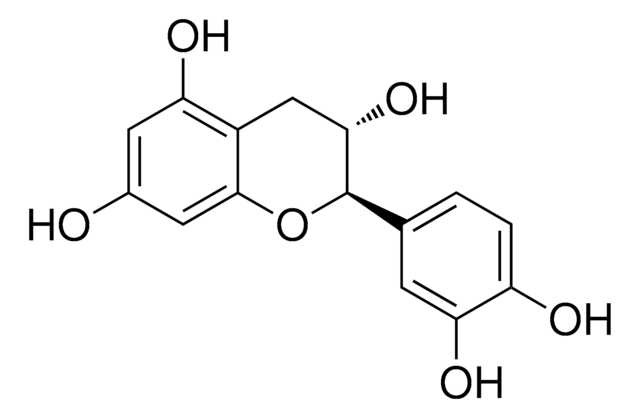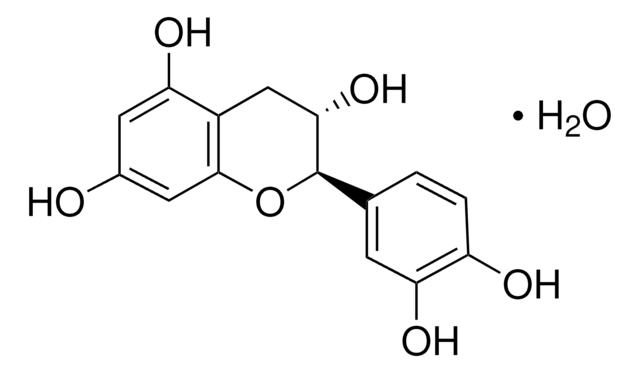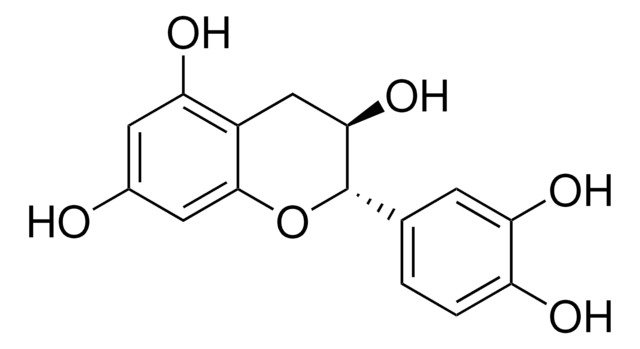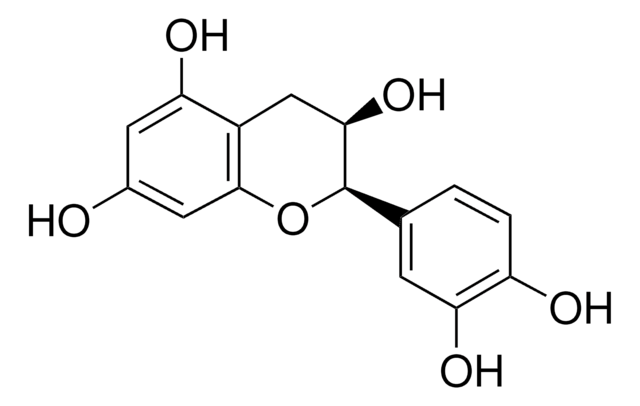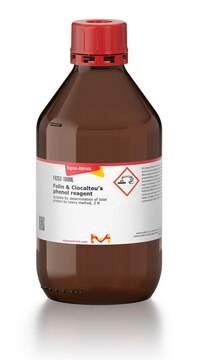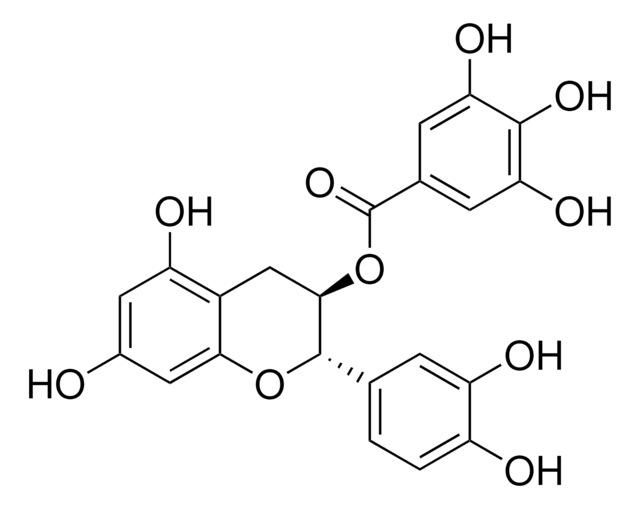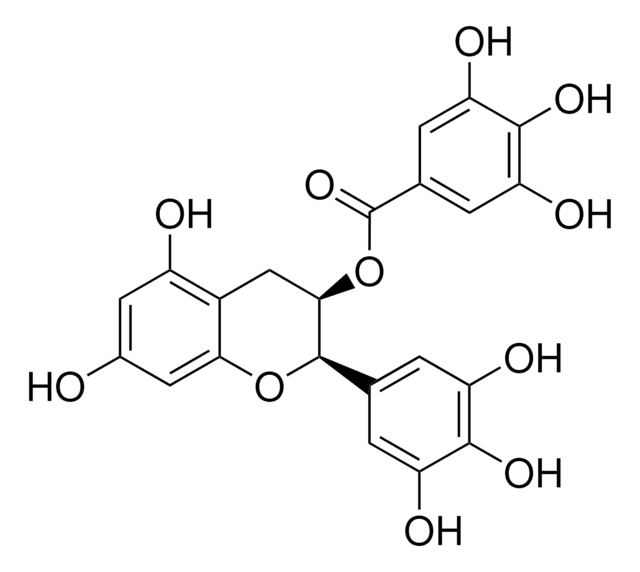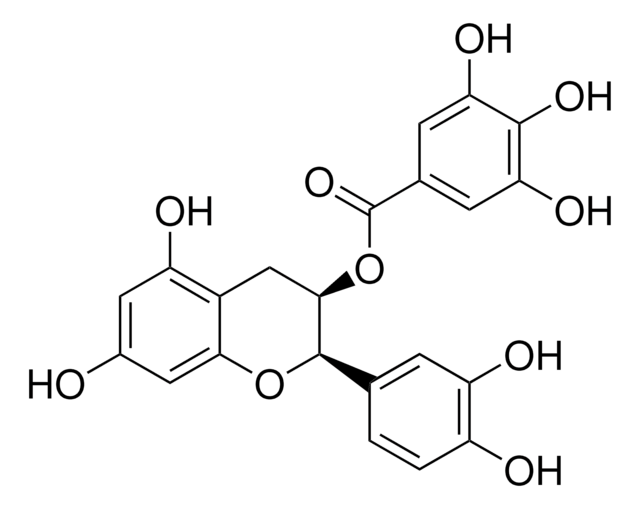22110
(+)-Catechin hydrate
≥96.0% (sum of enantiomers, HPLC)
Synonyme(s) :
(+)-Cyanidol-3
About This Item
Produits recommandés
Pureté
≥96.0% (sum of enantiomers, HPLC)
Forme
powder
Activité optique
[α]/D +26±2°, c = 1 in H2O
Impuretés
≤8% water
Pf
175-177 °C (anhydrous) (lit.)
Température de stockage
2-8°C
Chaîne SMILES
[H]O[H].O[C@H]1Cc2c(O)cc(O)cc2O[C@@H]1c3ccc(O)c(O)c3
InChI
1S/C15H14O6.H2O/c16-8-4-11(18)9-6-13(20)15(21-14(9)5-8)7-1-2-10(17)12(19)3-7;/h1-5,13,15-20H,6H2;1H2/t13-,15+;/m0./s1
Clé InChI
OFUMQWOJBVNKLR-NQQJLSKUSA-N
Vous recherchez des produits similaires ? Visite Guide de comparaison des produits
Catégories apparentées
Description générale
Application
- As an inhibitor of steel corrosion in hydrochloric acid solution.
- As a model compound in the study of antimicrobial activities of flavonoids on Escherichia coli.
- As a starting material for the synthesis of catechin glucosides of biological importance.
Attention
Mention d'avertissement
Warning
Mentions de danger
Conseils de prudence
Classification des risques
Eye Irrit. 2 - Skin Irrit. 2 - STOT SE 3
Organes cibles
Respiratory system
Code de la classe de stockage
11 - Combustible Solids
Classe de danger pour l'eau (WGK)
WGK 3
Point d'éclair (°F)
Not applicable
Point d'éclair (°C)
Not applicable
Équipement de protection individuelle
dust mask type N95 (US), Eyeshields, Gloves
Certificats d'analyse (COA)
Recherchez un Certificats d'analyse (COA) en saisissant le numéro de lot du produit. Les numéros de lot figurent sur l'étiquette du produit après les mots "Lot" ou "Batch".
Déjà en possession de ce produit ?
Retrouvez la documentation relative aux produits que vous avez récemment achetés dans la Bibliothèque de documents.
Les clients ont également consulté
Articles
Antioxidants protect biological systems from oxidative damage produced by oxygen-containing free radicals and from redoxactive transition metal ions such as iron, copper, and cadmium.
Protocoles
Coumaric acid; Quercitrin; Myricetin; Quercetin
Notre équipe de scientifiques dispose d'une expérience dans tous les secteurs de la recherche, notamment en sciences de la vie, science des matériaux, synthèse chimique, chromatographie, analyse et dans de nombreux autres domaines..
Contacter notre Service technique
